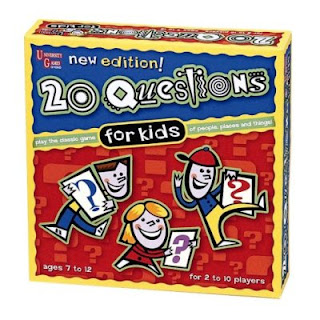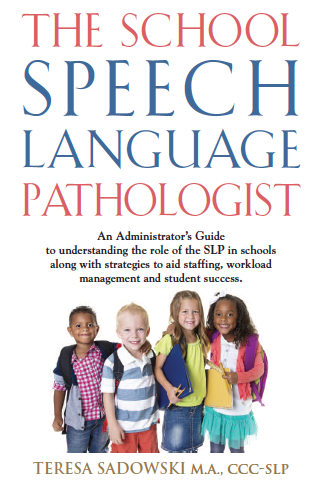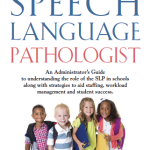My Book “The School SLP”
It’s here!!!
THE SCHOOL SPEECH LANGUAGE PATHOLOGIST is now for sale at all storefronts as an e-book for $4.99:
AMAZON:
http://www.amazon.com/dp/B00Y6YDAZI
BARNES & NOBLE:
http://www.barnesandnoble.com/w/the-school-speech-language-pathologist-teresa-sadowski/1121994087?ean=2940151592819&itm=1&usri=2940151592819
BOOKLOCKER:
http://booklocker.com/books/8038.html
ITUNES:
https://itunes.apple.com/us/book/school-speech-language-pathologist/id998181107
KOBO:
https://store.kobobooks.com/en-US/ebook/the-school-language-pathologist
The Dropsies
I just wanted to share a funny story about a student I proctored during some testing we do. This student basically has the dropsies. The first time we worked together they must have dropped their pencil over 20 times. And every time they dropped their pencil they stopped what they were doing and dove under the table for it. As far as I know there is no accommodation for this this type of problem.
After observing the student the first 15 or so times, I realized they only dropped their pencil when they were concentrating and organizing their response. Diving under the table broke that concentration.
With that unstandardized data under my belt I began to brainstorm….”What could I do about this?” Since I am a bright gal with lots of experience and three boys of my own I was able to come up with an extremely sophisticated solution. Keep in mind I did this without a meeting, consultation with the school psychologist, no chart and not one tally mark.
The next time we worked together I sharpened 10 pencils and kept them within my reach. Every time a their pencil hit the floor, I quickly handed them another one. Of course I trained the student on this procedure before hand. We actually made a joke about it and practiced the pencil hand off.
Again using unstandardized data, no chart and no tally marks, I concluded that it worked like a charm. They were able to keep their focus and concentration a little better, if they didn’t have to dive under the table every other minute.
I can’t even imagine how often this student must drop their pencil in the course of the day.
This time of year we all need a little humor…..this is my lame attempt. Speech therapy humor is usually only funny to speech therapists who actually have a sense of humor:)
Here come the high school years
I’ve been a little reflective this week. Last weekend my oldest son graduated from college on Saturday and my youngest son graduated from high school on Sunday. I found this article written in 2009, the year my youngest was a freshman in high school. It was written from the perspective of a parent who had gone through the process and a teacher who knew the types of schools kids were looking at. At the end of the article I wrote that I was a little sad not to have a middle schooler any more. I’m not sad at all that I don’t have a high schooler anymore. One reason is is that I know I have raised a confident and capable young man soon to be considered an adult. The other reason is no more private school payments! Imagine the possibilities!
Here Come The High School Years
Even though we are still in the dead of winter most middle schools around the country have already began preparing their 8th grade students and their parents for High School. In my district, they have already hosted a parent information night and visited the High School. Next week our students take their placement test. Most private High School and alternative High School applications were due in December and students are anxiously waiting to see if they get in. Moving on to high school is a big deal for these kids and most are ready to move on. However, I guarantee that most kids are thinking about what their social status will be in High School, not “am I going to be able to do the work or will I be successful?”
Students will enter high schools at a variety of different academic and maturity levels. High School placement tests are fairly good at placing students in the proper academic level. Public Schools will usually offer 2-3 different academic levels for students to enter. Private Schools will often offer 4-5 different academic levels. Parents need to understand that just because their middle schooler was an honor roll or even high honor roll student that does not automatically mean that the student is placed in the highest academic level. “A” work in middle school is very different than “A” work in high school. So don’t be too concerned about your child’s initial placement but do keep an eye on your student’s progress. You and your child will realize quickly if the work is too easy or too difficult. At that point, your child can speak to their teacher or guidance counselor about moving levels. Always let your child try to work things out on their own before intervening, it is high school after all.
By the end of 8th grade, kids are starting to feel really grown up. Parents occasionally seem to think it is the right time to back off completely. Don’t think they don’t need you because they do. They still need guidance, support and supervision in High School. What they don’t need is hovering. It is a fine line but you still need to know what your child is doing in school and how they are doing in school. Supervision after hours is just as important. They are experimenting with new friendships. Keep tabs on who their new friends are and don’t assume every parent has the same rules and values you do.
Homework becomes more important in high school. Usually a good percentage of a student’s grade is based on homework completion. If your school keeps grades on line, continue to check assignment completion, often. Your child should be doing some homework at home if they are not I would check in with teachers or review teacher expectations (usually provided as an outline). Some district might even have a homework policy. There is some controversy among teachers and administrators around homework. Let’s face it not all parents can do calculus or even algebra for that matter. We are probably all a little rusty on our French or Spanish. The controversy is that students do not go home on an even playing field where homework is concerned. However, by High School shouldn’t expectations be raised and shouldn’t students be more independent around homework? If your child is having difficulty academically in high school, encourage them to get help from their teachers before you step in. At the same time make sure they are doing the work.
I think it is important for all parents to have a basic idea of the school curriculum. You need to make sure of what they are taking and when they are taking it. If you have a child who receives special needs services it is a lot more important for you to be involved. You need to know exactly what your child is suppose to get, when the services take place, who will be providing the services and a direct contact person for any special needs concerns. Most schools will go out of their way to review programs and educational plans with parents of special needs students. If your child’s high school balks at this, pay even closer attention to their services. Any school I have ever been involved with as a Speech Language Therapist or as a parent has tried their best to design appropriate service plans, listen to students and parents and respond appropriately. Schools are not always perfect but remember you also have to work at developing a good working relationship with them. Education plans should be ammended or updated to dovetail with the high school schedule.
Don’t be too worried about your baby going off to high school. They will probably be ok. It’s scary for us parents and I know I’ve been on pins and needles those first few days of high school…..just worrying and wondering if everything is ok. Rather glad I don’t have to go through that again. Try to know what is going on with your child. Keep talking to your high schooler even if they don’t want to. Find something you can both feel comfortable talking about or do together, and then sneak some serious discussions when you can. Let your child know your expectations for their academic performance and behavior in general. You don’t have to set expectations at an impossible or stress inducing level but set some expectations. I’ve seen one child through high school and off to college and enjoyed almost every minute of it.
The picture above is of my son’s 8th grade graduation last June. I no longer have a middle school student. A little sad I have to admit.
20 Questions for Kids-Modify that Game

20 Questions for Kids is another one of my top games in therapy. The cards that come with this game are a speech and language therapist’s dream come true. Put out by University Games, should really be called 20 clues. I will use it for a whole session or for quick 5 minute filler.
The Original Rules:
To be honest I never really followed the rules and it has been a long time since I have read the original rules. Each card gives 20 clues about a person (real or fictional), place or thing. The children take turns listening to the clues and try to guess the target word. To keep track of which clues are read, chips cover individual spots numbered one to twenty. The game board is a path in the shape of a question mark. Lots of my students have found this interesting.
Modified Way to Play:
Skills Targeted: Drawing Inferences/Conclusions, Auditory Comprehension, Memory, Pragmatic skills
- I take control of the chips just to save time.
- When working with a group I am usually the only one read the clues. unless I am playing or have the kids working in teams.
- The language used in the clues is sometimes tricky; however, the cards have the answers on the bottom so I instruct the kids to cover the answer with their thumb so I (or other players) do not see the answer when I help with reading.
- I will go through the pile to make sure the children have a reasonable chance of guessing the item, Is it something they would know?
- In a small group setting, I usually have the students take turns.
- The student selects a number; I cover that number with a chip and read the corresponding clue.
- Depending on the abilities of the student, I may rephrase/repeat the clue or even previous clues.
- Now the student can make a guess.
- At this point I may talk about whether the child made a good logical guess or ask them to tell me how they came up with that answer, maybe even reread the clues to tell them why that answer would not work.
- The following student must wait for the next clue before they can respond.
If the student guesses the answer after only 4 clues, they can move 16 spaces, after 10 clues 10 spaces….. - If I only have one student with me, we will take turns reading the clue cards to each other. This is still fun and targets individual needs.
- Sometimes I will use the cards without the game board, reading from top to bottom, as a quick activity.
This is a game where we tend to have a lot of fun. There is a lot of opportunity to practice individual skills. Occasionally, a student will be a little disappointed that they can’t figure out an answer. However, I will take that as a teaching opportunity pointing out that some of the clues are clearly easier than others. I might point out some of the silly responses other have made (all in fun and only when appropriate). I am not big on letting kids win all the time but I will often make sure I listen to a few more clues before I guess just to show them it is not always easy. In the process of writing this, I found that there are 2 new versions of this game. I plan on purchasing both today. (Attn: Do not purchase the “new edition” if you already own the original game-the questions cards are identical 2/23/2008). The Original 20 Questions for Kids is recommended for children 7-12 years of age. The 21st Century 20 Questions is recommended for ages 8-adult. The variety within the cards makes this game extremely versatile with middle school aged language groups where the abilities of the students often vary.
Blurt-Modify that Game

Blurt is my absolute favorite game to use in therapy. I have actually worn out 2 game boards over the years. We play it a lot at home too.The
Original Rules:Blurt is advertised as a “Game of Word Racing”. The general idea is to be the first to Blurt out the correct answer after a general description. Players take turns reading the descriptions or one person becomes reader. To start someone rolls the dice. The number on the die determines which description to read and how many spaces the first person to Blurt out the answer will move. The player who moves their piece around the board first is the winner.
Skills Targeted: Word Retrieval, Pragmatic skills, Auditory Comprehension
Modified Way to Play:
- I take control of the dice just to save time
- When working with a group I am usually the only one read the description unless I have the older kids working in teams.
- Since my students often have difficulty coming up with the correct answers quickly I play several rounds of individual Blurt to get them moving around the board.
- Then I throw in a few “True Blurt” rounds just to add a little variety and excitement to the game. This means we play Blurt using the original rules to the game. Obviously, I am very careful to make sure that none of the students will feel bad or get upset if they are not successful. If I note this happening I switch quickly back to individual Blurt.
- I only choose descriptions that I feel the student has a reasonable chance of getting correct and may go through several cards in the process.
- Depending on the abilities of the student, I may rephrase or repeat the description, emphasize specific words or give an additional clue.
- If I only have one student with me, we will take turns reading the descriptions to each other. This is still fun and targets individual needs.
- If the student has difficulty reading the descriptions, I instruct them to cover the answer with their thumb and show it to me.
- Sometimes I will use the cards without the game board as a quick word retrieval activity.
I try to make sure the kids are laughing and having fun. Everyone gets lots of turns when we play Blurt and lots of chances to work on their specific needs. You can pace Blurt to move quickly or slow it down for students who need it. Blurt comes with two sets of question cards, a junior version targeting the 7-9 age group and an version recommended for 10-adult. This makes it extremely versatile with middle school aged language groups where the abilities of the students often vary.
Sample Descriptions:
Junior VersionA large, round fruit with a thick, orange rind, used for making pies and jack-o-lanterns.A place with runways where aircraft can land and take off.Someone who cuts and sell meat.Older VersionA long plank balanced on a support in the middle.Someone who makes things out of iron, such as horseshoes.To learn by heart.
Daniel Pink on motivation TED talk
All administrators need to take a listen to this. I think you can learn something. This is one of the TED talks. If you don’t know who Daniel Pink it’s time you did. I recommend you also pick up a few of his books.
http://www.youtube.com/watch?v=rrkrvAUbU9Y&feature=relmfu
Teresa
Improve that lateral lisp-maybe it’s not so hard
In the 25+ years of being a Speech Language Pathologist, I’ve done my best to avoid students who need work on their lateral /s/**. Pawning them off on other therapists was always good ploy. It also helped that some of the school systems I worked with felt that if articulation did not effect school performance articulation was not addressed. So honestly if the lateral /s/ kids were out there, they were never brought to my attention. Now I’ve landed myself at a school that actually wants articulation therapy for their students.
Since I hadn’t really worked on articulation for years, I had to get creative. Last year I took an articulation workshop with Char Boshart. Guess what I learned? That articulation therapy hasn’t changed in 30 years. Many of the techniques and even the tools are the same. It was a nice refresher. One thing Ms. Boshart was big on was getting the mouth into a good rest position. Which is a good starting point for /r/ and /l/ but a little more invasive than I usually like to do. You have to understand this is tricky with older kids. Honestly, I’ve never seen much success with /r/ even with other therapists. I think it is a real speciality and you have to be comfortable with. Another new trend is shorter more frequent sessions. Now that makes sense, more supervised practice. The bigger challenge is getting teachers and administration on board with this. Missing teaching time even 5 minutes is a problem these days when test scores are such a priority.
Now for my lateral lisp student. I never thought I could get a good /s/ from a lateral in isolation but I did! I was easy. /s/ in general is produced like /t/. The tongue is basically in the same place. Have the student produce t-t-t-t-t-t-t then slide into /s/. I got that juicy tidbit during an internet search. Don’t know why that technique didn’t occur to me sooner.
So my 3rd grade student who has a lateral /s/ is on his way to changing his /s/ production. As I listen to him spontaneously read, his correct /s/ production is about 30% without any prompting. During therapy he tells me it’s hard but I think it’s him being a little dramatic. He is able to hear the difference in the sounds, feel the difference with placement and self correct with a reminder. He needs practice an investment, which will come with maturity. I predict he will eventually change his /s/ production complexly. Never thought I could get anyone to do that.
**A lateral lisp is where the air comes out of the sides of the tongue when producing /s/, rather than the front. A lateral lisp might also be called a “slushy /s/”
Use Comics to Develop Higher Order Language
How long has it been since you read a comic book or the funnies? Most people began reading them for fun when they were young tweeners and probably never thought much of it. If you ever analyzed the language use in most comic books and funnies you might realize that they can make excellent and natural higher order language learning tools.
Most of us developed higher order language so naturally that we didn’t even notice. Higher order language is basically the ability to use and understand synonyms, antonyms, homonyms, homographs, figurative expressions, dual meaning sentences, metaphors, similes, idioms, sarcasm and non-verbal messages that might contribute to meaning. Higher order language allows us to see the “big picture.” Without the ability to understand and mentally manipulate higher order language you are unable to play with language, completing crossword puzzles is painful and you have difficulty “getting” jokes. These are very right brain concepts.
Students with language disabilities, poor academic skills, poor hearing or limited life experiences often have difficulty acquiring higher order language skills. You will be able to pick these kids out easily. They are the kids who struggle with reading comprehension, don’t get jokes, misunderstand sarcasm, misinterpret social situations and may even have frequent disagreements with peers.
The language used in comic books or in the funnies encompasses many higher order language structures. In addition there is a picture component that will aid comprehension. Take Peanuts for example, the comic itself is from the point of view of the children. The author/genius Charles Schulz, used the language in the comic to make it funny, show emotion or even to make a political point. He used the children in the comic to make it cute and appeal to children. If you grew up in the United States, the first comics you probably read were Bazooka Joe. Part of the experience of Bazooka gum was (and still is) reading the comic. Bazooka Joe comics were used to tell a joke or provide wisdom. For many years the front page of the Sunday Funnies were graced by The Family Circus. Each week Dolly, Billy, Jeffy, and P.J. got into predicaments that were familiar in every family. The cartoonist Bill Keane often used synonyms, antonyms, homonyms, sarcasm and dual meaning language to get his message across and make his comic funny.
Gary Larson’s The Far Side wins the prize for the best usage of higher order language. These simple one cell cartoons combined with a few lines of written language speak volumes. Comics in general are a creative medium incorporating both written and picture messages. When parents read comics to their children it adds another layer of auditory learning.
As kids get older their tastes will change. Don’t freak out when your child asks to buy Mad Magazine. It’s rude and it’s crude but it is froth with higher order language and unfortunately humor that interests them. Some daily funnies tell an ongoing saga which can show conflict and encourage prediction. The beauty of comics is that even children with language deficits can grow in their comic maturity. They might however need increased explanation as to “why” something is funny. That makes great conversation at the family table.
So while you might want your children to read the classics (and they should) encourage a variety of reading material including comics. Comics can do just as much for their higher order language development and you both might get a laugh out of it too.
Teresa Sadowski MA/SLP-ccc
The School Speech Therapist
New York Times Opinion Piece “Confessions of a Bad Teacher”
I came across this article today in the NY Times. This is an article that hits a little too close to home for most of us. Administrators please read and give it some thought. If you are pro-active, logical, realistic and fair you won’t run into teacher evaluation problems.
Understanding higher order language skills
This article was originally posted in Your Middle Schooler: A Unique Age in February 2008. It was the first in a series of articles on Higher Order Language Development. The importance of higher order language development and what to do to foster higher order language development. In following articles I will address strategies to foster understanding and use of higher order language development. If you have a specific concern in this area contact me.
Develop Those Higher Level Language Skills!
During the middle school years, students are beginning to develop higher level language abilities. Most students do this so naturally we do not even notice. Teachers do their best to help students gradually develop mature language skills. However, students with language disabilities or just weak academic habits may have difficulty acquiring these higher level language skills.
What are some higher level language skills?
• Development of mature vocabulary
• Understanding of word relationships such as homophones and homographs
• Understanding and use of figurative expressions
• Organization of mature sentences (oral and written)
• Understanding and use of mature grammatical structures (oral and written)
• Ability to draw conclusions and inferences
• Ability to paraphrase and rephrase with ease
• Ability to reason
• Looking at things from another’s perspective
Concerns when Students do not attain higher level language skills.
• Difficulty with comprehension (oral and written)
• Unable to understand and make connections and associations
• Difficulty understand jokes, riddles and humor in general
• Inability to organize language
• Writing skills will suffer
• Poor problem solving skills
• Inability to be flexible with language ( I will explain more about that later)
• Academic success is effected
• Immature pragmatic abilities (social speech skills)
Misunderstandings in social situations
Many simple activities can help foster development of higher level language skills. Keep an eye on my blog. I will continue to provide information and suggestions for intervention. If you need me to address an area ASAP or you have specific questions drop me a comment.
Teresa
Hearing health in children and adults
http://www.examiner.com/speech-pathology-in-boston/earbuds-proceed-with-caution
New article on Examiner focusing on proper use of earbuds to maintain good hearing health. You might want to consider bring this up at your school in May, as part of better speech and hearing month.
Teresa








